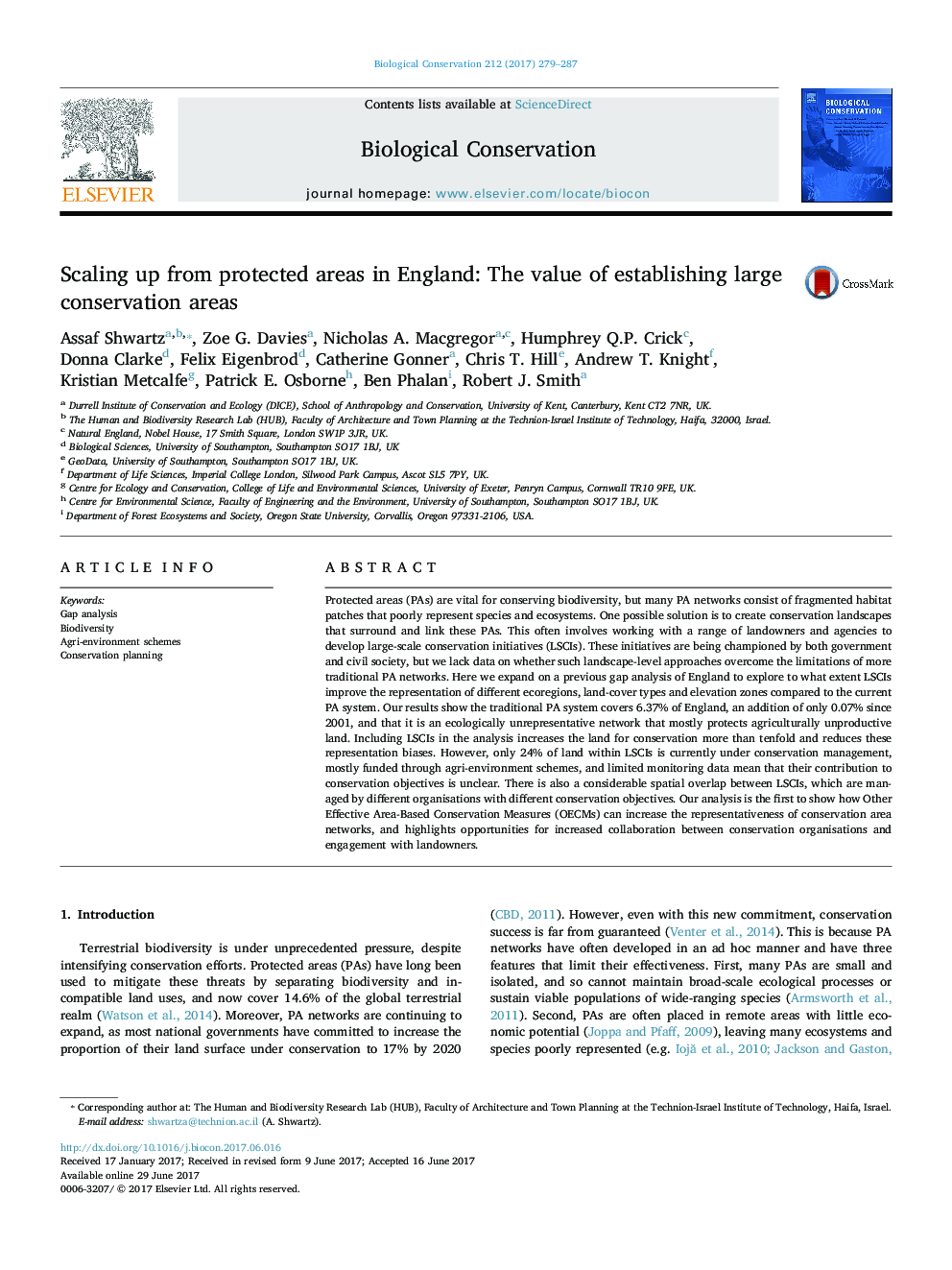| کد مقاله | کد نشریه | سال انتشار | مقاله انگلیسی | نسخه تمام متن |
|---|---|---|---|---|
| 5743110 | 1412296 | 2017 | 9 صفحه PDF | دانلود رایگان |
- Large-scale conservation areas help overcome limitations with protected area networks.
- England has >Â 300 of these large-scale conservation initiatives (LSCIs).
- These LSCIs increase land designated for conservation and reduce representation bias.
- But only 24% of their land is currently under any conservation management.
- Thus, LSCIs have unrealised potential but engaging landowners is crucial for success.
Protected areas (PAs) are vital for conserving biodiversity, but many PA networks consist of fragmented habitat patches that poorly represent species and ecosystems. One possible solution is to create conservation landscapes that surround and link these PAs. This often involves working with a range of landowners and agencies to develop large-scale conservation initiatives (LSCIs). These initiatives are being championed by both government and civil society, but we lack data on whether such landscape-level approaches overcome the limitations of more traditional PA networks. Here we expand on a previous gap analysis of England to explore to what extent LSCIs improve the representation of different ecoregions, land-cover types and elevation zones compared to the current PA system. Our results show the traditional PA system covers 6.37% of England, an addition of only 0.07% since 2001, and that it is an ecologically unrepresentative network that mostly protects agriculturally unproductive land. Including LSCIs in the analysis increases the land for conservation more than tenfold and reduces these representation biases. However, only 24% of land within LSCIs is currently under conservation management, mostly funded through agri-environment schemes, and limited monitoring data mean that their contribution to conservation objectives is unclear. There is also a considerable spatial overlap between LSCIs, which are managed by different organisations with different conservation objectives. Our analysis is the first to show how Other Effective Area-Based Conservation Measures (OECMs) can increase the representativeness of conservation area networks, and highlights opportunities for increased collaboration between conservation organisations and engagement with landowners.
Journal: Biological Conservation - Volume 212, Part A, August 2017, Pages 279-287
